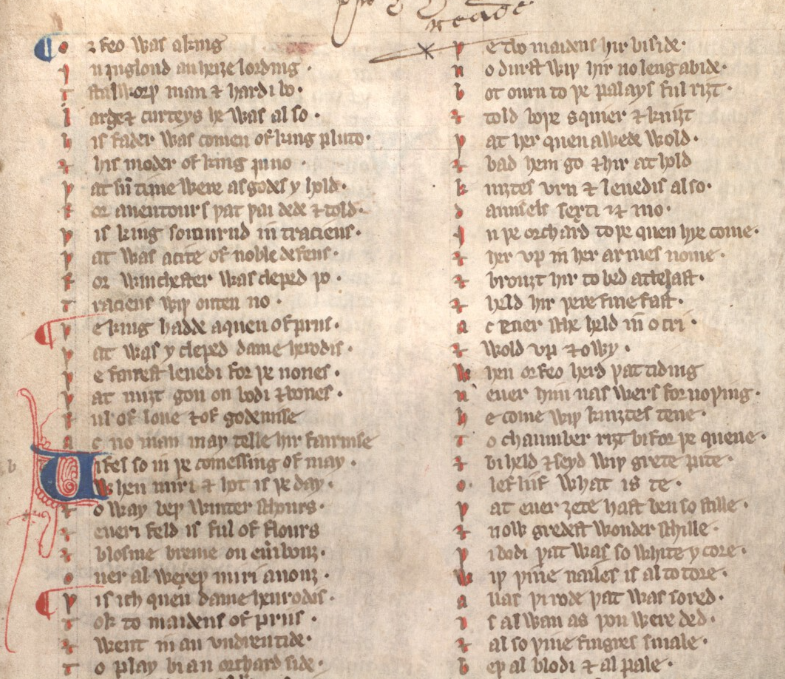I’ve just published a new article in postmedieval! It describes how pirates informally reproduced Jack Spicer’s long poem The Holy Grail in the 1960s; along…
Leave a CommentCategory: publication
I have a new article out in Pedagogy and Profession this week, ‘Writing a Teaching Book‘. In it, I think pragmatically back on the process…
Leave a CommentThe Times Literary Supplement recently carried a perceptive and generous short review of How to Read Middle English Poetry by Anthony Bale, who calls the book ‘accessible…
Leave a CommentI’ve just done the proofs for the first chapter in the collection Books, Readers, and Libraries in Fiction, edited by Karen Attar and Andrew Nash. My…
Leave a CommentI’m very happy to report that Oxford University Press have now published How to Read Middle English Poetry, and copies are beginning to arrive. It’ll…
Leave a CommentI have a new article out in Medium Ævum 92.2, titled ‘What Tongue does Chaucer’s Custance Speak? “Latyn corrupt” Revisited’. This article tackles the sense of…
Leave a CommentJust out from me in Textual Practice, ‘Manuscript Canonicity‘: an article exploring how manuscripts themselves can generate prestige in present-day scholarship. This article’s published open access!…
Leave a CommentHere’s the cover for How to Read Middle English Poetry! The image is part of Manchester, John Rylands Library, MS Eng. 1 (a copy of Lydgate’s…
Leave a CommentI have just signed the contract for my second book, How to Read Middle English Poetry, forthcoming from Oxford University Press.
How to Read explains, in clear, student-friendly terms, how to find, understand, and analyse English poetry 1150–1500, for study or pleasure. I built the book to be useful even if you don’t have a great library or anthology to hand. Where possible, the discussion uses poetry in the fine TEAMS-METS series, which all have stable print forms, but can be read for free online.
One Comment
The Review of English Studies has just published my latest article, ‘Verse-Craft, Editing, and the Work: Shadows of Orfeo‘. In it, I explore what potential the concept of the work has to help us in understanding early English material which exists in multiple witnesses, using Orfeo as my example and attention to the craft of verse as my method.
Leave a Comment